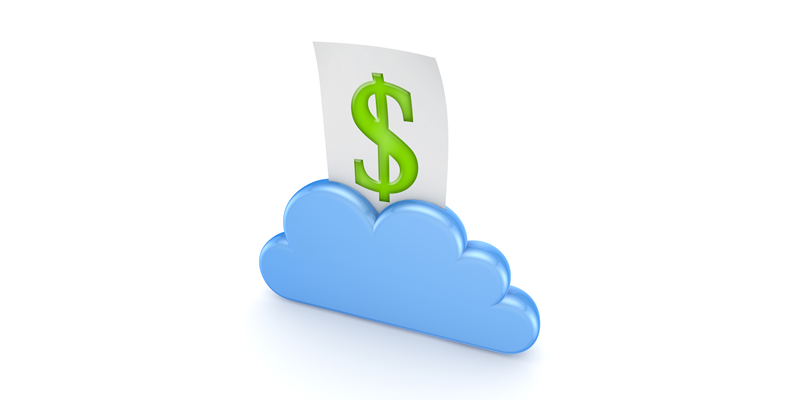
In the late 1980’s the Oldsmobile car brand was suffering an identity crisis. Consumers were sour on the image of a car brand that only appealed to those with sliver hair and advanced years. The solution? Come up with a catchy slogan that promoted redesigned vehicles for a younger crowd. And that slogan was, “This is not your father’s Oldsmobile.”
Catchy? Maybe. Successful? Apparently not. Some point to the ad campaign as the reason for the brand’s demise. In reality, sales had been in decline for more than a decade amidst stiff competition from other brands. Ultimately, General Motors dissolved Oldsmobile in 2004.
Just as new models supplanted Oldsmobile, new models of IT consumption are replacing the old. You need IT resources to achieve business goals. What is your plan to acquire them? In other words, how are you going to pay for what you need?
In the past, the question might have been as simple as, “Do we buy or lease?” But the buy versus lease decision was often one of the final considerations when the IT need had been analyzed, a solution designed, and approval to purchase obtained.
What’s different now? The rapid adoption of a consumption-based model with roots that reach back to the 1950’s. What is it? Normally we call it “the cloud” and it has changed when and how we decide to answer the payment question.
Contrary to what some may believe, the cloud is not a place. Rather, it is a method of consuming only the IT resources necessary to achieve a goal. Cloud services allow users to quickly provision compute, storage, and networking resources with an online dashboard that provides an easy-to-use interface. We might even say cloud computing has a certain “feel” of flexibility to the users.
Now, sometimes we hear statements like, “In the cloud you only pay for what you use.” If we were able to check the SNOPES website regarding this phrase we would end up with a “Mixed” rating. Sometimes the statement is true, sometimes it is not. So, how do companies pay for cloud? That depends.
There are public clouds like Amazon Web Services, Microsoft Azure, and IBM Cloud. These are consumption-based services that work on a utility model. Here is where many get the idea that an organization only pays for what is used in a cloud. In each service there are charges for compute, storage, and networking based on the number hours and volume of resources consumed.
There are also private clouds. For a variety of reasons from security concerns to regulations, a company may choose to acquire and maintain its own internal cloud with compute, storage, networking, and software assets. Buying these assets can be a capital expense. So how is this cloud?
Remember, cloud is not a place, but a method of consuming IT and a certain “feel” that the users experience. Private clouds are set up with an expressed purpose of giving internal users the cloud experience. Private clouds might even calculate usage and charge internal company divisions for the resources consumed.
Utilizing and orchestrating both public and private clouds to meet computing needs is usually called “Hybrid Cloud”. In a Hybrid cloud, even if a company charges an internal division for consumed resources, there is still the overall cost of acquiring the equipment running the private cloud. But what if the budget for this capital expense is not available?
Recognizing the need in the market for on-premises consumption, manufacturers created a new model. And, just like the roots of cloud computing reach back farther than we might expect, this new model is nearly two decades old, but gaining steam.
Some call it the “cloud that comes to you”. The model operates like the cloud but resides in the customer’s datacenter. But wait, isn’t that a private cloud? Yes and no. Yes, in that the equipment resides in the customer’s datacenter. No, in that there is no capital expense to place the equipment.
This is a pay-as-you-go model where the OEM still owns the assets and charges its customers based on consumption. This is far more than a capacity-on-demand arrangement. It is a way to obtain the IT resources a company needs, with no large initial capital expense, while meeting privacy and regulation requirements.
Oldsmobile’s new models failed to restore the company to its previous glory. Perhaps it was because they were producing models no one really wanted. However, companies want the cloud model, making the cloud that comes to you in for a bright future.
Intrigued? Fill out the form below and we will connect you with one of our seasoned experts who can show you how the cloud can come to your datacenter.
About the author
Patrick Schmidt is a Technology Lifecycle Management Specialist with LRS IT Solutions. For more than 21 years, he has been helping customers get a firm grasp on their asset and contract management with a combination of comprehensive service level analysis and lifecycle management best practices.
Originally posted at https://www.lrsitsolutions.com/Blog/Posts/150/Uncategorized/2021/8/How-are-You-Going-to-Pay-for-That/blog-post/